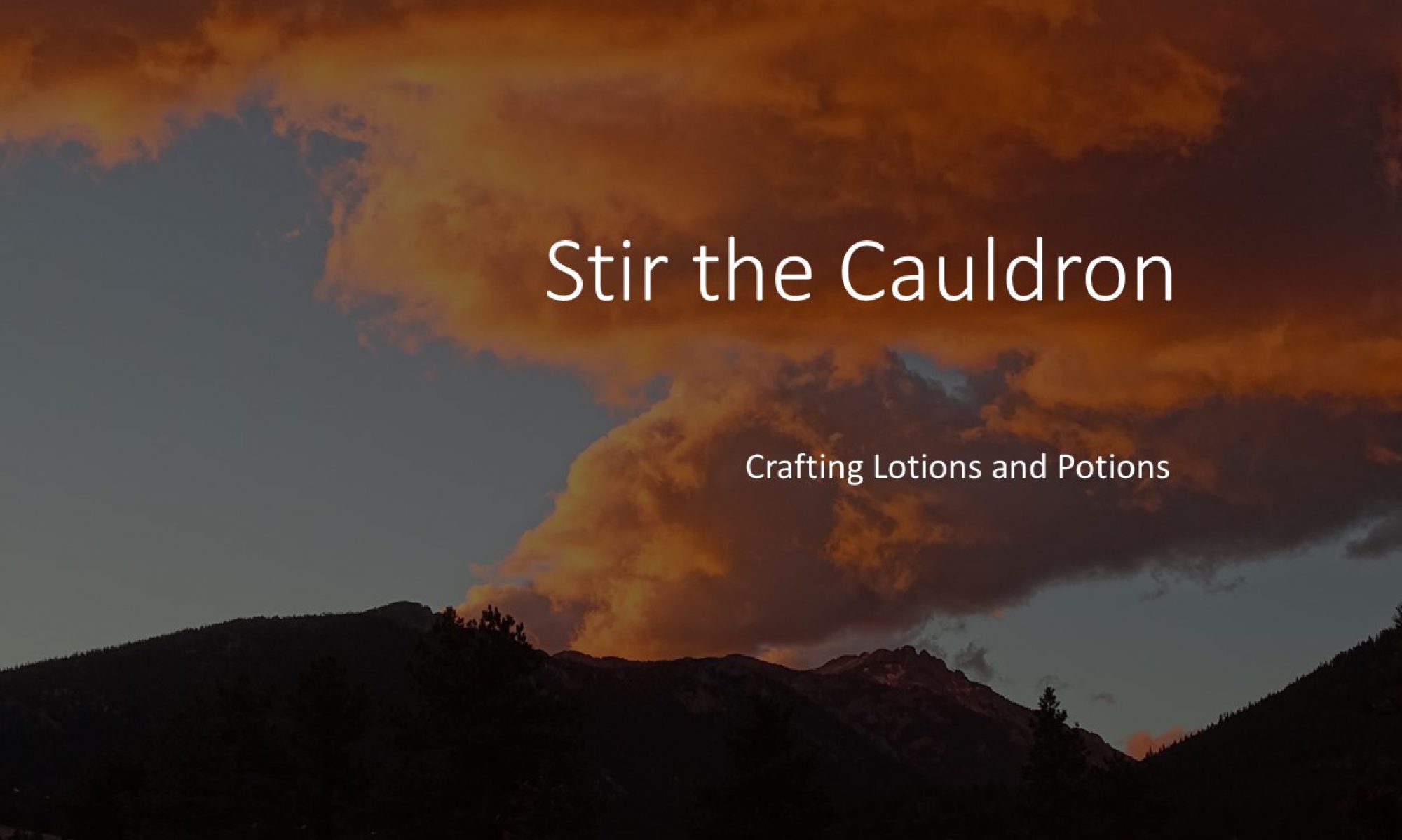
This is my goto recipe for a handcreme (“Handcreme #14”). I produce it with different blends of essential oils to reflect the seasons. This version celebrates the land waking up at the end of Winter. I’ve called it Imbolc.
Imbolc falls around the 1st of February in the Northern Hemisphere. It celebrates the first stirrings of Spring as the days become perceptably longer.
Although I normally describe this as a handcreme, its use isn’t limited to hands. It’s a classic cold cream that is suitable for hands, face or any other skin that may be prone to dryness. Rosemary Gladstar gives the proportions of ingredients in a cold cream in her book Herbal Healing for Women. She called her version her Famous Face Cream:
“The basic proportions of this cream recipe should be about one part group 1 (oil phase) to one part group 2 (water phase).
“In group 1, the oil proportions should be approximately 2 parts liquid oils (such as grapeseed, almond, apricot) to 1 part solid oil (cocoa butter, beeswax, lanolin).”
My Heavy Duty Handcreme #21 is another example of a cold cream.
The ingredients, equipment and method I use to make Handcreme #14 are:
Oil Phase
- 150ml Sweet Almond Oil
- 75ml Coconut Oil
- 30g Beeswax
- 20g Shea Butter
- 7.5ml Lanolin
Water Phase
- 150ml Distilled Witch Hazel
- 75ml Aloe Vera Gel
Cool Down
- 7.5m Vitamin E oil
- 20-30 drops of essential oils (see later in this post for the Imbolc blend).
Equipment
- Two heaproof glass containers, one with a capacity of al least 500ml and the second with a capacity of at least 250ml. (I use Pyrex jugs. Mason Jars are also suitable.)
- An electric oven capable of being set to a temperature of 60-70C, or a shallow pan wide enough to accept the glass containers and a kitchen stove electric hob or gas ring
- A hand blender or whisk
- Clean jars for the handcreme
- Spatula(s)
- Cloths or paper towels for cleanup.
Method
- Measure out your oil phase ingredients into the largest of your two glass containers, and measure out the water phase ingredients into the other glass container. Put a stirrer into the container with the oils – a spatula or spoon.
- Heat the ingredients until all the solid oils and waxes melt. Either;
- Put the containers into an electric oven set to about 70C, or;
- Put the containers in a shallow pan and surround them with water. Bring the water to the boil on a stove top and reduce the heat so the water simmers gently.
- Prepare your containers.
- When the solid oils and waxes have melted, take the containers out of the oven or off the stove. Stir the oils (remembering that the stirrer will be quite hot).
- Put your blender or whisk into a pot of hot water to preheat it.
- When you start to see the oils solidifying, put your blender or whisk in the container with them. Whisk or blend as you add the water phase ingredients, keeping use of the whisk or blender to a minimum.
- Briefly whisk or blend as the mixture cools. When it gets to around 40C (when the container will still be warm to touch but not too hot to hold comfortably) add the cool-down ingredients and whisk or blend briefly for the final time.
- Pour and scrape your cream into your containers.
- Label the containers and keep them in a refrigerator until you want to use your handcreme.
- Clean up with hot, soapy water.

I’ve used Handcreme #14 as the basis of a number of seasonal cosmetics. In December I added my Yule blend of oils.
For the Imbolc version I started with an Imbolc blend proposed by Amy Blackthorn. (The blend is published in Amy’s book Blackthorn’s Botanical Magic.) Amy’s blend has a base/heart note of Angelica Root, with heart notes of Basil and head notes of Laurel. I modified Amy’s blend by adding Tobacco Absolute, Violet Leaf Absolute and a goodly dose of Fir Needle. I aimed to develop a fragrance with green notes throughout. I’m quite happy with the results – I developed this blend in 2019 and re-used it this year without modification.
Head notes
- 16 drops Fir Needle Essential Oil
- 8 drops Laurel Essential Oil
Heart notes
- 8 drops Violet Leaf Absolute
- 8 drops Basil Essential Oil
Bass notes
- 8 drops Angelica Root Essential Oil
- 4 drops Tobacco Absolute
To end on a cautionary note – neat essential oils can be highly corrosive. With very few exceptions they should never be applied to skin unless diluted. I first made this blend last year in a laboratory grade plastic test tube, intending to add it to handcreme a few days later. When I came to use it, the interior of the tube was etched and the base was crazed and cracked. I mixed up some more in a glass container for my batch of handcreme!

